T H E C O L O R P U C E
“Puce is the French word for flea”
What is Puce or ‘Pooce’ as some call it?
08 November 2012
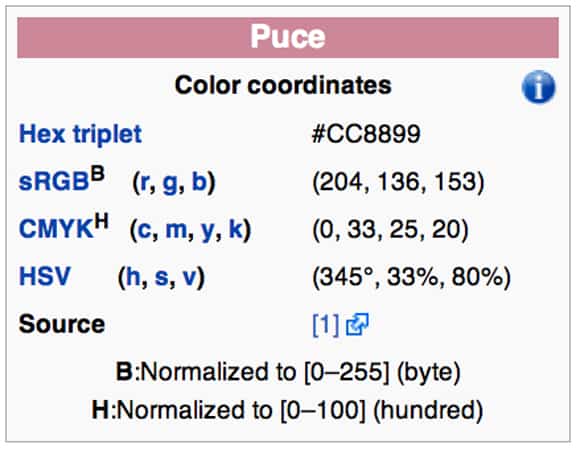 Puce (often misspelled as “puse”, “peuse” or “peuce”) is a color that is defined as ranging from light grayish red-violet (the version shown at left) to medium to dark purplish-brown, with the latter being the more widely accepted definition found in reputable sources. The Oxford English Dictionary dates the use of “puce” (in couleur puce) from 1787. The first recorded use of puce as a color name was in the 14th century, in the French language. (Wikipedia)
Puce (often misspelled as “puse”, “peuse” or “peuce”) is a color that is defined as ranging from light grayish red-violet (the version shown at left) to medium to dark purplish-brown, with the latter being the more widely accepted definition found in reputable sources. The Oxford English Dictionary dates the use of “puce” (in couleur puce) from 1787. The first recorded use of puce as a color name was in the 14th century, in the French language. (Wikipedia)
Puce is the French word for flea. The color is said to be the color of the bloodstains remaining on linen or bedsheets, even after being laundered, from a flea’s droppings or after a flea has been killed. (Wikipedia)
Bottle collecting: In the vintage-bottle-collecting hobby, “puce” is arguably the most desirable color. (Wikipedia) *I wonder how Wiki got this notion?
Puce is probably the most misunderstood color in bottle collecting. I admit, I am just as guilty as most as I like saying puce and it adds mystery, intrigue and value to a reddish or pinkish amber bottle. The problem is, most of us do not feel like we understand the singularity of the color puce so we add a color description in front of it, a color we are familiar with to create the color description. I call it “Puce Juices” because it is not uncommon to hear strawberry puce, raspberry puce, plum puce, orange puce, peach puce, apricot puce, cherry puce etc. to describe a bottle color. Crazy isn’t it? Then you have the nutty pronunciation. Many pronounce it “pooce” while another large group draws out the “u” and says “Puce” like Juice. I believe this is correct. Oh our crazy English language!
Read More: Is it finally time to tackle bottle colors?
P U C E J U I C E S
Peach Puce – Raspberry Puce – Strawberry Puce – Plum Puce – Cranberry Puce – Orange Puce – Apricot Puce – Cherry Puce
P U C E G L A S S G A L L E R Y
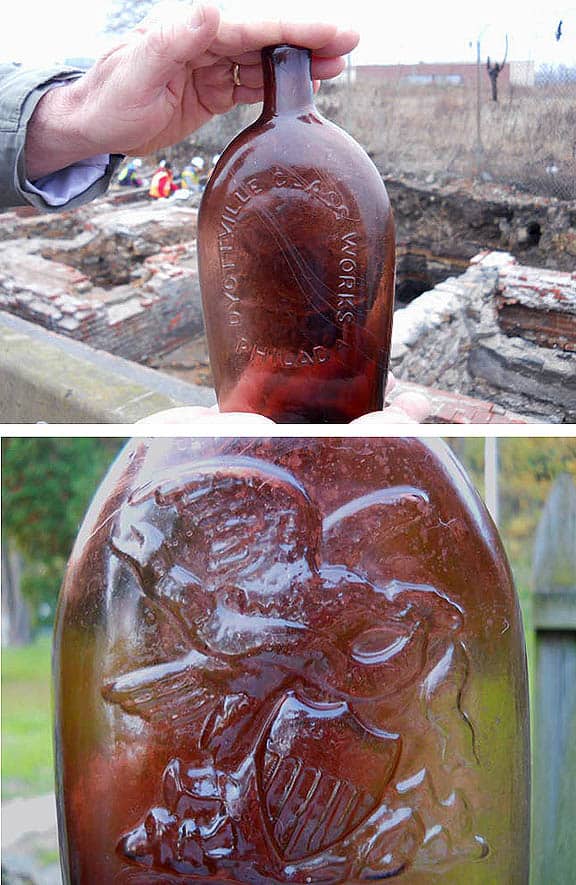
My Dyottville Puce Eagle flask at the Original Dyottville Glass works factory in Philadelphia Pa. We visited the site on 2/17/12 – Rick Weiner – 19th Century Bottle Diggers
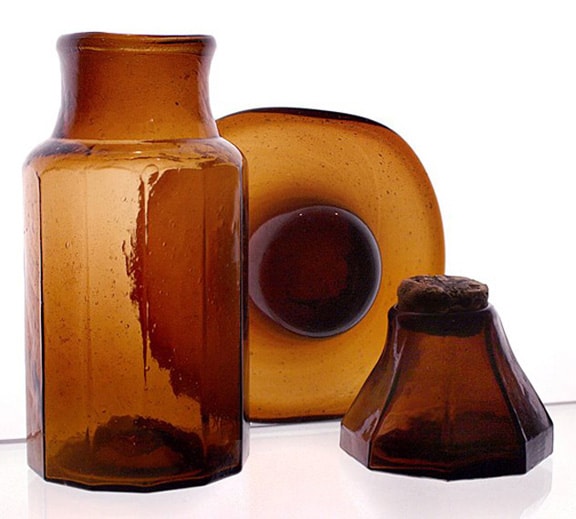
Beautifully photographed trio showing a utility jar, hat whimsey and ink what might be called a coper puce. – photo Michael George
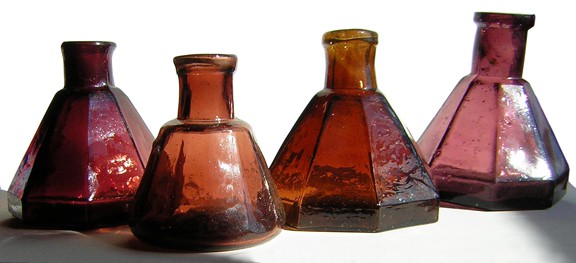
l to r- op purple/wine type tone , pink 12 sided op, op puce ink (posted a few days back) and a smooth based lilac purple that looks like watered down welch’s grape juice.

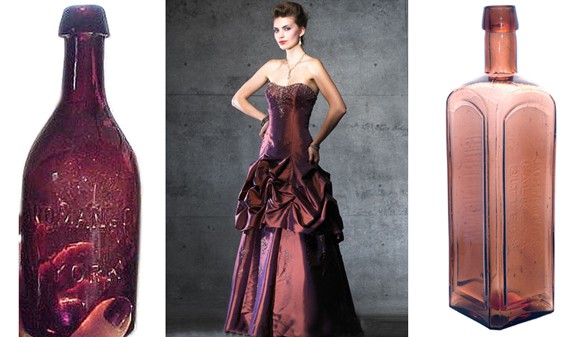
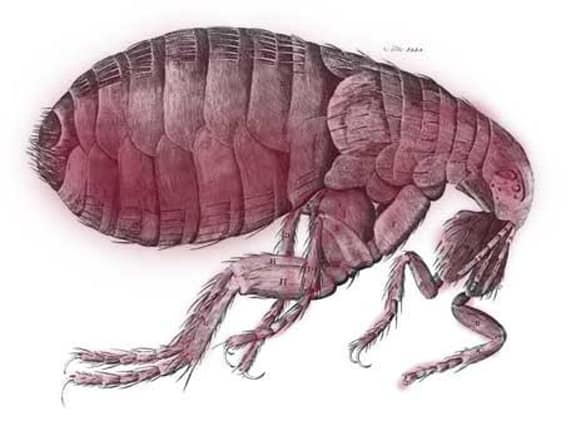
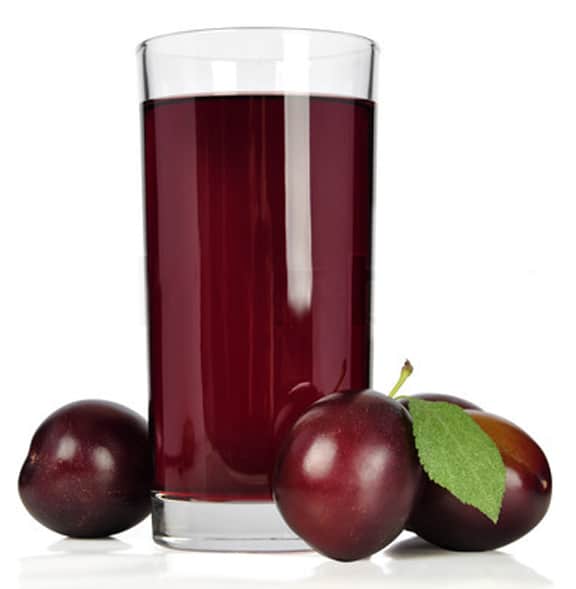
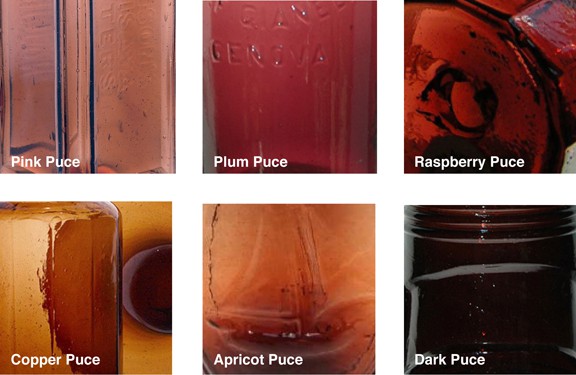
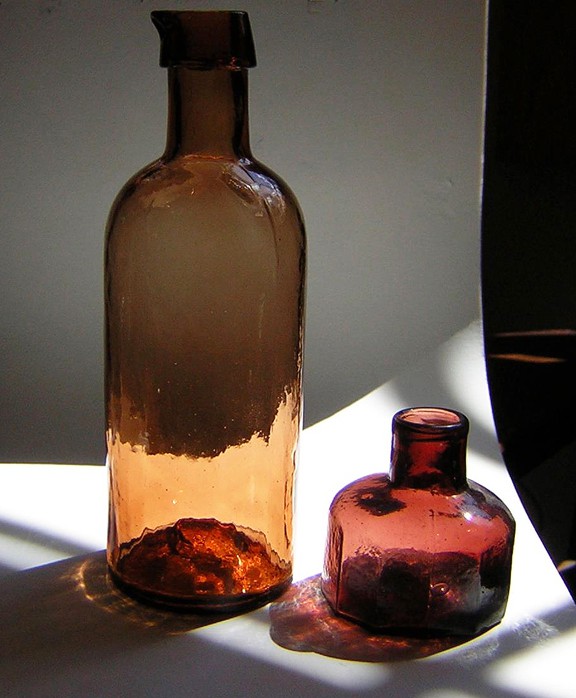
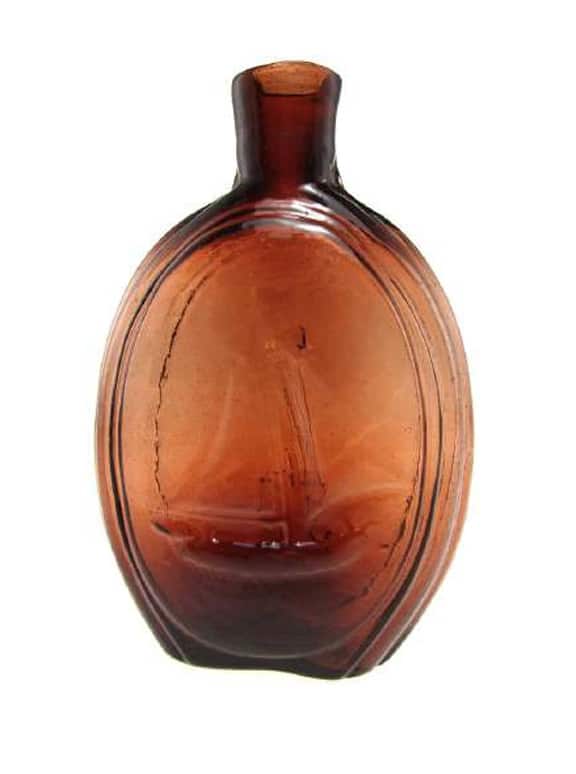
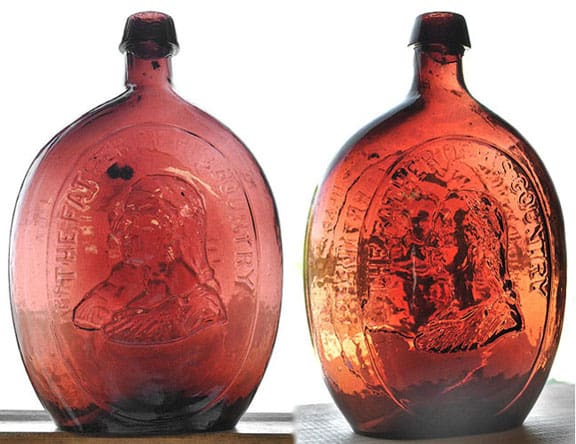
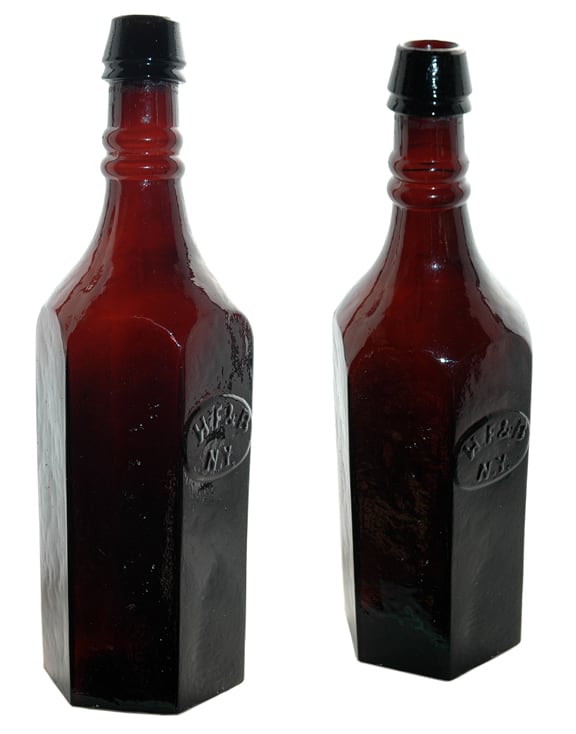
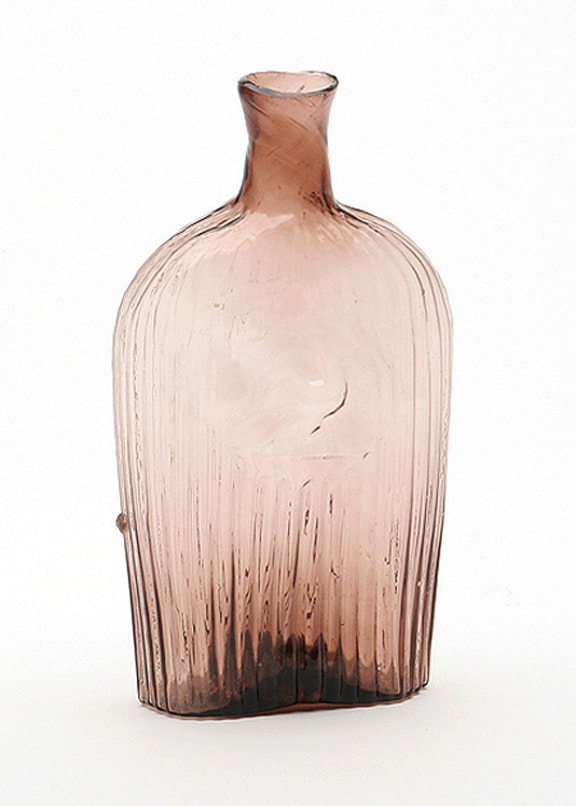






Very interesting and thought-provoking articles on bottle colors, Ferd. The insulator folks have done a credible job with their standardization of colors in a chart, and I believe that it’s become widely accepted within their hobby. Their chart might be a good place for us to begin. Perhaps the FOHBC could appoint a committee, which could include some of the venerable, respected old-timers in our hobby who have bought, sold and examined colored bottles for decades, to study the issue and then make recommendations to the board?
Puce, or “poose” as the easterners mispronounce it, is one of my favorite hgues in antique bottles. Some darker puces are sometimes referred to as “cherry” and medium called “claret”. All that this means is that the color spectrum, regardless of shade is subjective to many interpretations. Some folks go far overboard in calling the shades of their glass. How many colors can a bottle possess? Many in some cases, but in others what is one color to one person can be seen by another as multi-shaded. When I observe a piece that is described as “pink with light apricot and peach overtones” I simply cringe and pass on to another. Such overblown descriptions are an automatic dismissal. Get real folks when describing a piece of glass. Don’t look too deeply to what isn’t there. Just my .02.